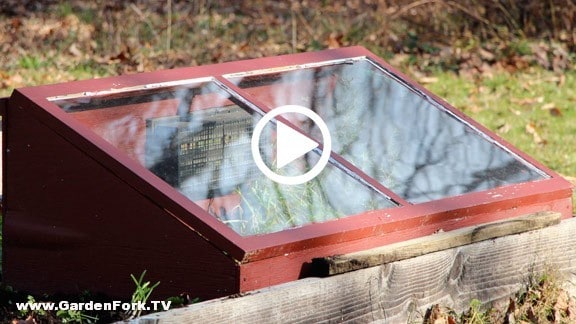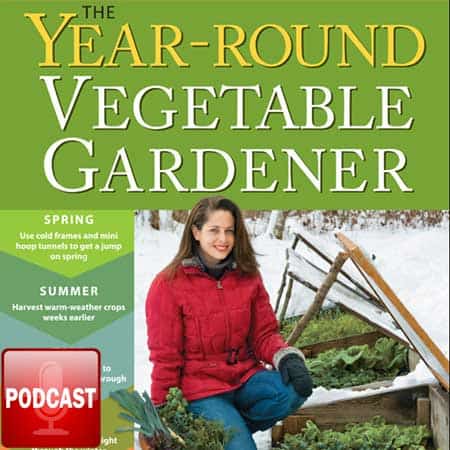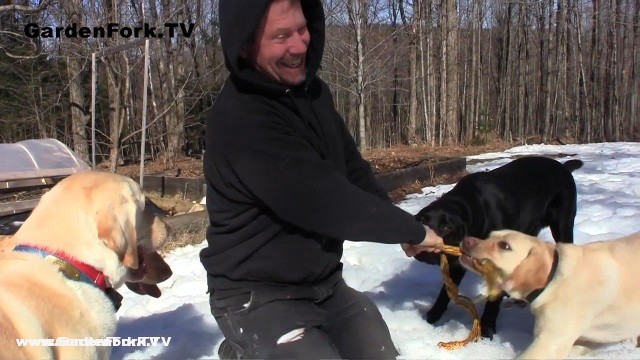Rick and I were talking on the GF Radio podcast about the success of his mini greenhouse, and how using 2 layers of plastic, separated by some wood supports, had added an insulation layer. I immediately thought of a video I saw on Curtis Stone’s YouTube channel about how he uses a double layer of plastic in his very successful market garden operation. Here is the video:
Curtis uses a fan to force air between the two layers of greenhouse plastic, which reduces heat loss through the plastic. Think of it as air as insulation. I think you can do this on a small scale, but the key is to pick a fan that works for your size greenhouse. Here is a good starting point for fans you can connect to your greenhouse plastic.

I’m wondering if you have a small greenhouse, could you hook up a bathroom fan you’ve pulled out of a dumpster? I’ve got a few from some renovation projects sitting here looking at me. One of them worked really well on the homemade sap evaporator, but we have more to put to use.
I have built several what I call mini-greenhouses, aka hoop houses, to cover our raised beds. And of course, we have videos about all of them here. Considering the size of my raised beds, 4′ wide x 12′, I’m not sure using a fan to insulate the layers of plastic would be a good use of electricity. Maybe we could go solar with the fan?
I am a big fan of Curtis Stone, and how he shares so much info on his YouTube channel. He also has in-person classes if you are serious about becoming a market gardener. I’ve learned better methods on how to grow carrots and salad greens from Curtis.
He has turned his yard, and those of a few of his neighbors, into farmland, basically. Gone is the grass and instead there are rows of vegetables. This doesn’t go over well with everyone, but I’m all about a smaller lawn.




















 Rick updates us on his DIY aquaculture and hyrdroponics project. Aquaculture is like organic gardening in a closed system using fish and the waste water from the fish feeding the plants, and the filtered water is then returned back to the fish tank. If you already have a goldfish pond, you are that much closer to having an aquaculutre system. What kind of fish to use, what is the difference between hyrdoponics and aquaculture, and how you can build an inexpensive hydroponics system using 5 gallon buckets and PVC pipe. Mike’s friend Eric has a site about
Rick updates us on his DIY aquaculture and hyrdroponics project. Aquaculture is like organic gardening in a closed system using fish and the waste water from the fish feeding the plants, and the filtered water is then returned back to the fish tank. If you already have a goldfish pond, you are that much closer to having an aquaculutre system. What kind of fish to use, what is the difference between hyrdoponics and aquaculture, and how you can build an inexpensive hydroponics system using 5 gallon buckets and PVC pipe. Mike’s friend Eric has a site about 